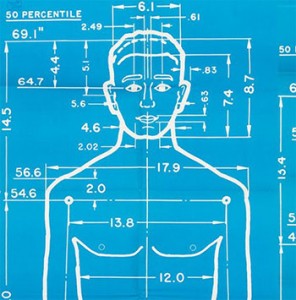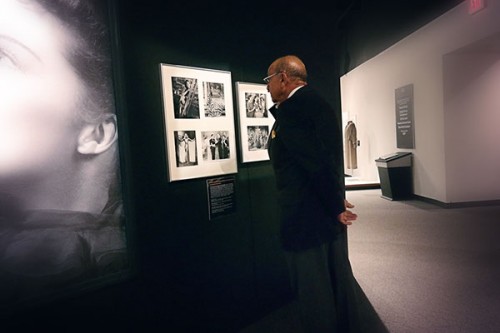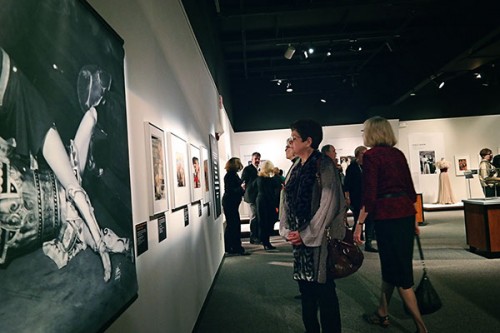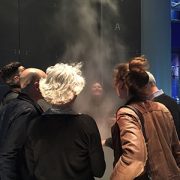
Meet Myriam Springuel, Smithsonian Affiliations Interim Director and SITES Director on Monday and Tuesday during the AAM Meeting. Photo by Dane Penland. [Apollo DestinationMoon-2-22-2017-0223] [NASM2017-00421]
Are you headed to the American Alliance of Museums Annual Meeting in Phoenix? Three Smithsonian Affiliations team members will be attending and have organized several opportunities to meet with Affiliates.
On Monday, May 7, brainstorm possible programs and events with the Smithsonian and fellow Affiliates around the 50th anniversary of the lunar landing in 2019. We’ll also talk about how we can work together to promote and leverage one another’s programming. 3:00 – 4:00 pm in the Curtis Room, 2nd Floor, Hyatt Regency Phoenix.
On Tuesday, May 8, meet the team at the SITES booth in the MuseumExpo! Interim Affiliations Director, Myriam Springuel; Interim Associate Director, Tricia Edwards; and National Outreach Manager, Laura Hansen, will be at the booth for an informal meet and greet. 3:00 – 5:00 pm, Booth 2814, MuseumExpo.
Throughout the meeting, look for Laura Hansen, National Outreach Manager. Laura works with Affiliate partners in the west and can answer any questions about the benefits of a Smithsonian Affiliation. Want to meet with her? Email her for availability- HansenL@si.edu.
Affiliates are featured in many AAM sessions. We’ve compiled a list below of sessions in which Smithsonian Affiliates are presenting or moderating. Stop in and say hello, or stick around for the entire session. Don’t forget to mention us in any social media posts – we’re @SIAffiliates on Twitter and @smithsonianaffiliates on Instagram. Have a great time in Phoenix!
If you don’t see your session listed, please let us know.
Sunday, May 6
1:00 – 2:15 PM
Room 226ABC
Beyond the Four Walls: Effectively Assessing Museum Programs in School Classrooms
Featuring the Museum of the African Diaspora (San Francisco, California) and the Pacific Aviation Museum Pearl Harbor (Honolulu, Hawaii)
Room 125 AB
Case Study: Live-Tweeting a Century-Old Race Riot: Sharing Difficult History through Social Media
Featuring the Senator John Heinz History Center (Pittsburgh, Pennsylvania)

Meet Tricia Edwards, Smithsonian Affiliations Interim Associate Director, on Monday and Tuesday too.
Room 128 AB
Education Collections: Connect with Me, and I Care
Featuring Conner Prairie (Fishers, Indiana) and the Denver Museum of Nature and Science (Denver, Colorado)
2:30 – 3:45 PM
Room 225AB
A Tale of Three Buildings: The Things You Need to Know before You Start Your Renovation
Featuring the Heard Museum (Phoenix, Arizona)
Room 129 AB
Leaders in Education Leading Museums
Featuring the Springfield Museum of Art (Springfield, Ohio)
Room 231ABC
Stop, Experiment, and Listen: A Fresh Approach to Creative Problem Solving
Featuring the National Civil Rights Museum (Memphis, Tennessee)

Find Laura Hansen, Smithsonian Affiliations National Outreach Manager, throughout the entire AAM Meeting. Email her to set up a meeting- HansenL@si.edu
Room 229AB
Who’s the Boss? Examining the Relationship Between Exhibition Contractors and Staff
Featuring the National World War II Museum (New Orleans, Louisiana)
4:00 – 5:15 PM
Room 227 ABC
Engaging the Arctic: Working with Northern Communities to Tell Their Stories
Featuring the Anchorage Museum (Anchorage, Alaska)
Monday, May 7
8:45 – 10:00 AM
Room 131 ABC
Decolonizing the Museum: Reflection, Vision, and Change
Featuring the Abbe Museum (Bar Harbor, Maine)
Room 126 ABC
Equity at the Heart of Professional Learning
Featuring the Ohio History Connection (Columbus, Ohio)
Room 121 BC
From Leadership to Impact: Taking Risks, Redefining Success, and Finding Your Voice
Featuring the Birmingham Civil Rights Institute (Birmingham, Alabama)
1:45 – 3:00 PM
Room 221 ABC
Straight to the Source: Connect and Engage with Teens in Your Community
Featuring the Bakken Museum (Minneapolis, Minnesota)
Room 222 ABC
Museum Compensation: Best Practices in Design for Sustainability
Featuring the Anchorage Museum (Anchorage, Alaska)
Room 225 AB
(Non)Profiteering: Mission Versus Margin
Featuring The Museum of Flight (Seattle, Washington)
Room 229 AB
The Role of the Community Engagement Curator
Featuring the Heard Museum (Phoenix, Arizona)
Tuesday, May 8
8:45 – 10:00 AM
Room 228 AB
75 Ideas in 75 Minutes – Accessibility Edition
Featuring the John G. Shedd Aquarium (Chicago, Illinois)
Room 129 AB
Are Museums the Right Home for Confederate Monuments?
Featuring the North Carolina Museum of History (Raleigh, North Carolina)
Room 227 ABC
Breaking Free: Two Years of Curating Our Communities
Featuring the Cincinnati Museum Center (Cincinnati, Ohio)
Room 226 ABC
A Dialogue with IMLS Reviewers: Tips and Techniques from the Experts
Featuring the Wing Luke Museum of the Asian Pacific American Experience (Seattle, Washington)
Room 229 AB
Making Space for (Other) Voices: Challenging Perceptions
Featuring the Arizona State Museum (Tucson, Arizona)
1:30 – 2:45 PM
Room 222 ABC
Membership on Center Stage to Deliver Financial Impact and Transform Museum Cultures
Featuring Space Center Houston (Houston, Texas)
Room 121 ABC
Case Study: Collections Inventories in Support of Object-Based Learning Programs
Featuring the Pacific Aviation Museum Pearl Harbor (Honolulu, Hawaii)
Room 122 AB
Case Study: The National World War II Museum Reimagines Its Digital Presence
Featuring The National World War II Museum (New Orleans, Louisiana)
Room 122 AB
Case Study: Social Humanity Immersed in Technology: The Art of Modern Communication
Featuring the Anchorage Museum (Anchorage, Alaska)
Wednesday, May 9
10:15 – 11:30 AM
Room 231 ABC
10 Practical Actions to Museum Accessibility
Featuring the Saint Louis Science Center (St. Louis, Missouri)
Room 128 AB
A Change in Elevation: Museums Rising to the Challenge of Equity
Featuring the Arab American National Museum (Dearborn, Michigan)
Room 229 AB
Measuring Visitor Motivation, Expectations, and Satisfaction
Featuring the Senator John Heinz History Center (Pittsburgh, Pennsylvania)
Room 129 AB
Museums and Race Report Card: Looking Back to Move Forward
Featuring the San Diego Museum of Man (San Diego, California)
Room 125 AB
Project Management: It’s Not Just for Breakfast Anymore
Featuring The Museum of Flight (Seattle, Washington)
11:45 AM – 1:00 PM
Room 124 AB
Inspiring Latinx Community Engagement through a Traveling Exhibition Mentorship
Featuring the Emma S. Barrientos Mexican American Cultural Center (Austin, Texas)
Room 125 AB
Inclusionary Museums: Paths to Elevation in Descendant Communities
Featuring the Ah-Tah-Thi-Ki Museum Seminole Tribe of Florida (Clewiston, Florida)
Room 231 ABC
Teaching Teachers: Using Evaluation to Develop Effective Professional Development
Featuring Mystic Seaport Museum (Mystic, Connecticut)
Room 131 ABC
(Not as) Easy as 1,2,3: The ABCs of Collections Moves
Featuring The National World War II Museum (New Orleans, Louisiana)
Room 128 AB
Not for Sale: Preserving a Community Collection
Featuring the Japanese American National Museum (Los Angeles, California)

















